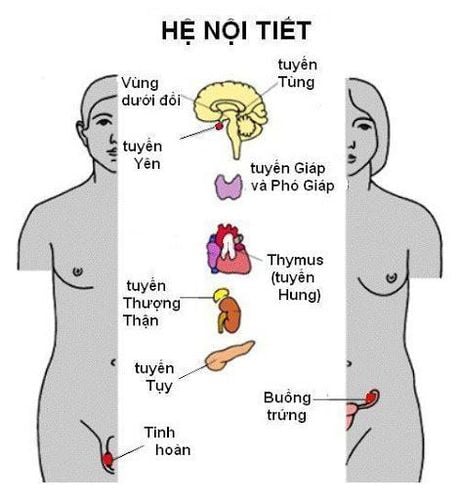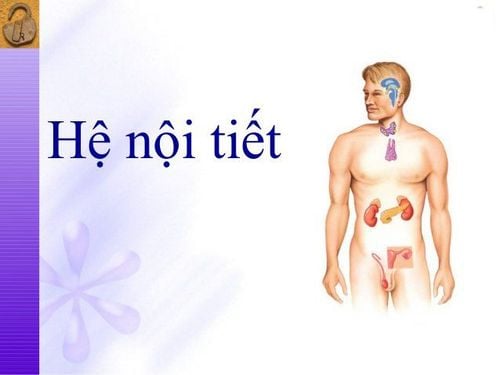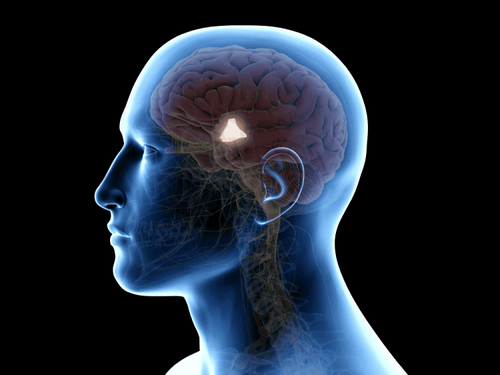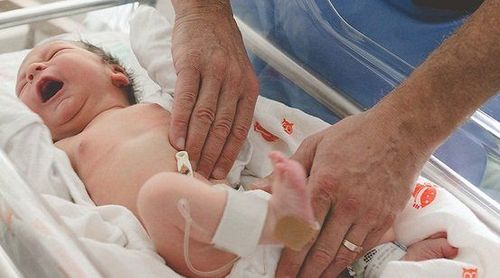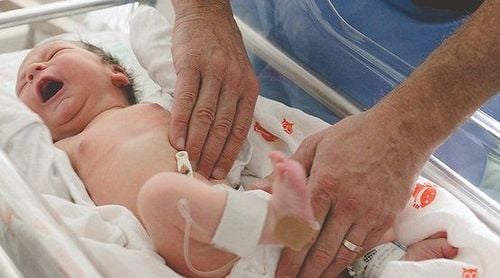This is an automatically translated article.
In men, the testicles make testosterone. This hormone helps men grow facial and body hair during puberty. It is also a signal that the penis grows larger and plays a role in sperm production.
1. Testicles
The testicles are oval-shaped organs in the male reproductive system. They are contained in a pouch of skin called the scrotum. The scrotum hangs outside the body in front of the pelvic region near the thigh. While this position can make the testicles vulnerable (they have no muscles or bones to cover), it provides a cooler temperature than other organs in the body. A cool environment will be essential for healthy sperm production.The structures inside the testicles are important for the production and storage of sperm until they are mature enough to ejaculate. The testicles produce the hormone testosterone. This hormone is responsible for libido, fertility, and the development of muscle and bone mass.
The testicles are a pair of sperm-producing organs that maintain the health of the male reproductive system. The testicles are called the gonads. Its female counterpart is the ovary.
The healthy development of male reproductive organs is:
Growth of facial and body hair Increase height Increase muscle mass Growth of Adam's apple The importance of testosterone is not limited to age puberty. Throughout adulthood, hormones are integral to a variety of functions such as: maintaining libido, producing sperm, maintaining strength and muscle mass, promoting healthy bone density, producing testosterone production.
The hypothalamus and pituitary gland control testosterone levels by sending signals to the pituitary gland to release hormones (follicle-stimulating hormone and luteinizing hormone). Luteinizing hormone (LH) stimulates the production of testosterone. If too much testosterone is produced, the hypothalamus will alert the pituitary gland to make less LH, which in turn results in the testicles dropping testosterone levels.
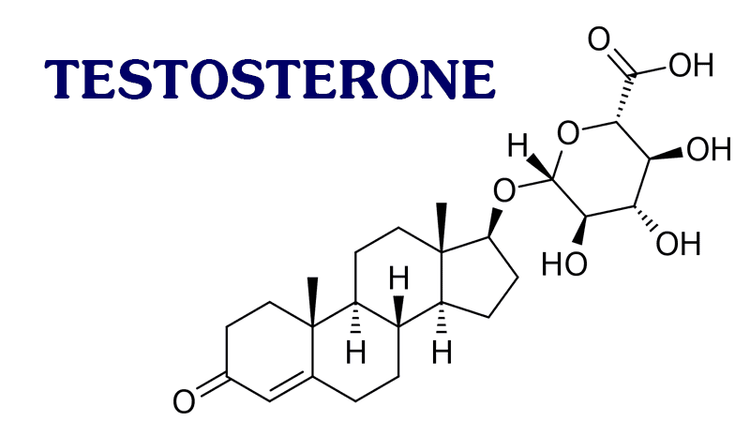
Trắc nghiệm: Bạn biết bao nhiêu về tinh dịch?
Tinh dịch là một phần quan trọng quyết định đến khả năng sinh lý, sinh sản của nam giới. Liệu bạn đã hiểu được bao nhiêu về thành phần quan trọng này? Hãy cùng thử tài thông qua các câu hỏi nhanh về tinh dịch sau đây nhé!
Bài dịch từ: webmd.com
2. The role of the testes in the endocrine system
The main function of the testicles is to produce and store sperm. They are important in making testosterone and other male hormones called androgens.
The testicles take the form of an ovum from tissues called lobules. The lobes are made up of coiled tubules surrounded by dense connective tissue.
2.1. The seminiferous tubules The testicular tubes (also called the seminiferous tubules) are the coiled tubes that make up most of the testicles. The cells and tissues in the seminiferous tubules are responsible for spermatogenesis, which is the process of making sperm.
These tubes are lined with a layer of tissue called the epithelium. This layer is made up of sertoli cells that aid in the production of hormones that make sperm. Among the sertoli cells are spermatogenic cells that divide and become spermatozoa or sperm cells.
The tissues next to the seminiferous tubules are called Leydig cells. These cells produce male hormones, such as testosterone and other androgens.
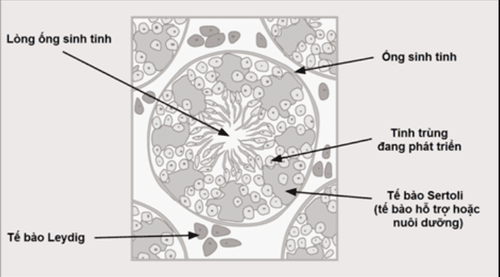
2.2. Testicular network After sperm is produced in the vas deferens, sperm cells move towards the testis capillaries through the testicular network. The testicular network helps to mix the surrounding sperm cells in the fluid secreted by the sertoli cells. The body reabsorbs this fluid as sperm cells travel from the vas deferens to the epididymis.
Before sperm can reach the epididymis, they cannot move. Millions of tiny processes inside the sperm membrane help move sperm along the drain.
2.3. The vas deferens The vas deferens are a series of tubes that connect the network of the testes to the epididymis. The epididymis stores sperm cells until they are mature and ready for ejaculation.
These vas deferens are lined with hair-like projections called cilia. Along with a layer of smooth muscle, cilia help move sperm into the epididymis. The drains also absorb most of the fluid that helps move the sperm cells. This results in a higher concentration of sperm than ejaculate fluid.
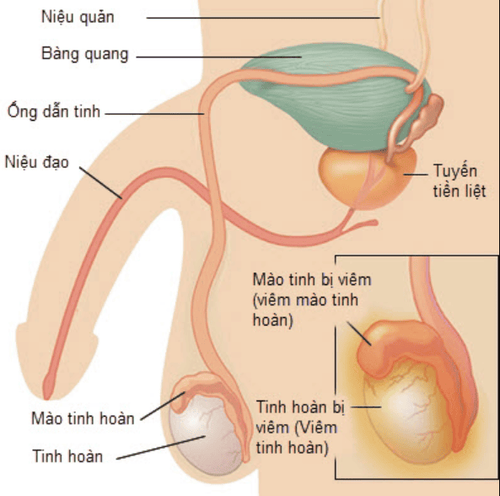
2.4. Membranous membrane The testes are surrounded by several membranes such as vasculosa, albuginea and vaginalis. The vasculosa membrane is the first thin layer of blood vessels. This layer shields the tubular interior of each testicle from subsequent layers of tissue surrounding the outer testicle. The next layer is albuginea.
It has a thick protective layer made of dense fibers to protect the testicles even better. The outermost tissues are the vaginalis layer (including the visceral layer that surrounds the albuginea layers to shield the tubules of tissue; the space between the outermost layer and the albuginea layer is the protective layer that surrounds almost the entire structure of the body. testicular).
3. Diseases related to the testicles
Testicular dysfunction is a disorder related to low testosterone levels and will cause problems including:
Decreased sex drive Decreased muscle mass Low sperm count (reduced fertility) Hair loss There are two types of disorders that are primary and secondary. The primary disorder is caused by a defect in the testicles, while the secondary disorder is related to a problem in the pituitary gland that indirectly affects testosterone production.
This condition can have many causes and the most common are:
Aging Defect in the pituitary gland or hypothalamus, such as a pituitary tumor (adversely affecting your ability to function normally) pituitary gland) and high prolactin levels (too much of the hormone causes low testosterone levels) Medicines Testicular problems such as severe trauma, radiation, or chemotherapy can all lower testosterone levels. Testicles play an important role not only in the male reproductive system but also in the endocrine system. The release of the hormone testosterone is integral to male development.

Customers can directly go to Vinmec Health system nationwide to visit or contact the hotline here for support.
Articles refer to sources: webmd.com, ncbi.nlm.nih.gov, healthline.com
MORE:
Keep Testosterone in balance Do you understand testosterone correctly? What is testosterone? Effects of Testosterone on men's health




